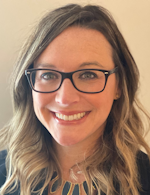How dental hygienists can confidently treat special needs patients: Insights from an expert (part 1)
Listen to the article on our podcast!
Editor's note: This is part one of a two-part series on special needs patients. Read part two here.
In October 2024, I attended the Dr. Carlos F. Salinas Dental Program on treating individuals with special health-care needs. I was blown away by all I learned and heard at this conference. Many of our colleagues work in this space, and I have always admired their work, but something about this conference really left me wanting to learn more.
Many hygienists hesitate because they feel unprepared for how to treat special needs dental patients with confidence. This two-part series will share practical insights to help hygienists provide compassionate, effective care.
When I attended dental hygiene school, more than 15 years ago, we did not see many patients with special health-care needs or people with intellectual and developmental disabilities (IDD). We did do a rotation at a specialty clinic, but this was not enough to gain confidence in my skills to treat this population.
What I learned at this conference was that I am not alone; in fact, many offices refer patients with special care or IDD needs to specialists. I also learned that because there are few providers who will see patients with special health-care needs, these patients are often referred to and treated by pediatric dentists.
I believe that we can offer more care to this population in our practices, and I hope to shed some light on that in this article. Because I am not an expert, I sat down with some experts and experienced clinicians so that I could gain some perspective on treating patients with special health-care needs and/or intellectual developmental disabilities. This information will be shared as a two-part series. Part 1 features an interview with Lisa Curbow, BAAS, RDH. In part 2, we will look at my conversation with Brooke Fukuoka, DMD, and Michelle Ziegler, DDS.
Lisa Curbow, BAAS, RDH: special needs hygienist
Lisa Curbow is a practicing dental hygienist in Texas who treats patients with special health-care needs. She is also a speaker and educator on the topic. I asked Lisa if she would be willing to participate in this interview and she graciously agreed.
When I asked Lisa what started her interest in this specific population, she shared, “My oldest child is on the spectrum, which is what sparked my interest in learning more about autism. From there, I began to learn more about working with people with special needs. About 16 years ago, I had a patient with multiple health issues, as well as developmental and physical disabilities. He was not able to tolerate much treatment in the chair, and all I could do was brush his teeth.”
“While this was beneficial, I was determined to find a way to make his visits more successful and provide him with more dental care. I also wanted to be able to put him at ease in the chair. I wanted more for him in the office so that his oral health could be improved. His parents had difficulty with home care, so his in-office care needed to be more than just brushing. Thus began my journey of figuring out what works and what doesn’t, and that being consistent and persistent is helpful.”
Modifications that work: Best practices for special needs dental care
I asked how Lisa modifies things in her practice to allow patients to be treated in the office. She said, “We take each patient’s individual needs and previous experiences into consideration. I created a special needs questionnaire that is sent to the caregivers to help us better understand the patient’s sensory issues, previous dental experience, oral home care, and specific limitations/disabilities. I often start with intraoral photos to get the patient more interested in what we are doing and looking at their teeth. This has proven to be valuable and often leads to being able to successfully take some X-rays. We may not be able to take everything we need, but we can get an idea of some dental issues that might need to be addressed quickly.
“If the patient can tolerate a prophy in the chair, I may use only curettes for their safety if they tend to move a lot, get agitated, or have uncontrolled movements. I may start with brushing and then move to polishing and then scaling. The order changes based on their tolerance for the procedures, their attention span, their sensory limitations, and assessing the areas of most concern.”
“My doctor has hospital rights that allow us to take the patients when needed to the outpatient hospital setting for sedation if they are unable to tolerate the required treatment in the office. In some of these cases, the cleanings and X-rays are also done while under sedation as that is less traumatic for the patient. I have fidgets, noise-cancelling headphones, a knee wedge, Calm Strips, and several other tools that can help to calm patients, reduce sensory overload, and allow them to be more comfortable. We also may adjust the time the patient comes in. For example, we may have them come in earlier than we typically open so that the office is quiet for them. We offer to let them wait in their car so they can be in a quiet space and bypass the waiting room.”
How dental hygienists can gain confidence in treating special needs patients
When asked what she would like to share with the hygiene community concerning the treatment of patients with special health-care needs, Lisa stated, “Learning about the most common intellectual and developmental disorders is important because it helps clinicians understand patients’ limitations and sensory issues. Consistency is key, but it is also important to try new things to find what works. Thinking outside the box can help you find the key to successful treatment.
“My book, Unlocking Smiles: Caring for Intellectual and Developmental Disability Dental Patients, was written to serve as a reference guide for treating patients with IDD in the office. It includes a quick reference section that identifies things to do and not do, as well as other tips to aid in making the visit more comfortable and successful for the patient. My goal is for more clinicians to be comfortable and confident treating these special patients.
“When seeing IDD patients, talk to them and their caregivers. Use a positive and upbeat tone to set the mood for the visit. Follow the lead of the caregiver in how they speak to the patient. If they speak in full adult words, do the same; this is what the patient is used to and understands. If they use simple childlike words, follow that cue as well. The caregiver is your best resource for their needs. They can help you if the patient becomes agitated from sensory overload, and the patient often responds better to a request from the caregiver.
“Also, take as many CEs as you can on the topic. This will help to boost your confidence and comfort in working with this demographic, thereby increasing access to care for special needs patients.”
As I spoke with Lisa, I was reminded of an experience I had in private practice, many years ago, before we understood autism as we do now. I had a pediatric patient who was diagnosed with autism. I had seen him a couple of times and he had done well. I did not have to modify much, just took extra time.
He came in again after my operatory had moved. To say it was a bad experience is an understatement. It was traumatic for him, his father, and for me as a young hygienist, all because of a change of environment and lack of consistency. I share this story with embarrassment because I did not know any better then, but now I do. And I am thankful for people like Lisa, and many of you, who help us to better understand how to treat these patients in a way that honors their boundaries, while providing quality care.
One thing I have noticed in speaking with Lisa and her colleagues who are working in the special care space is an overwhelming sense of compassion and dedication to helping patients with intellectual disabilities receive oral health care. There is something so special about this niche in our profession, and I look forward to continuing the conversation in the second part of this series on special needs dental care. A big thank you to Lisa for sharing with us!
Editor's note: This article appeared in the March 2025 print edition of RDH magazine. Dental hygienists in North America are eligible for a complimentary print subscription. Sign up here.









